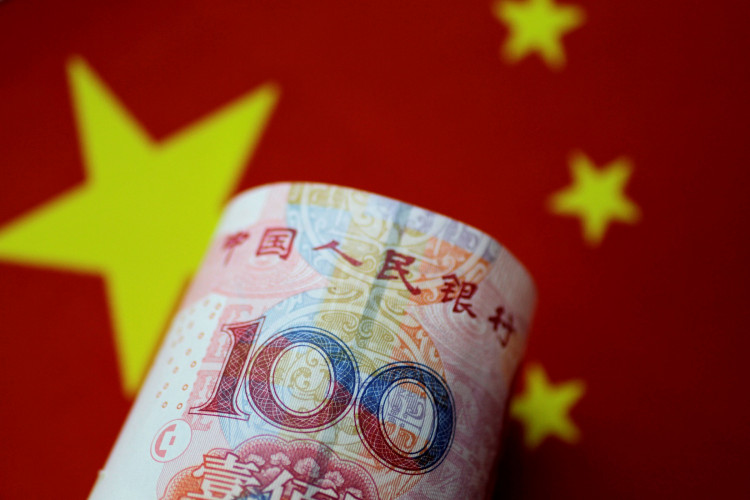Since the beginning of August, the yuan's exchange rate against the U.S. dollar has declined again, with the offshore yuan experiencing a larger drop. Analysts suggest this reflects the tension between external pressures on the yuan and China's internal economic recovery. As domestic recovery persists, bearish sentiment on the yuan is expected to wane.
As of 4:30 p.m. Thursday, the onshore yuan was quoted at 7.2072 against the dollar, a decrease of 83 basis points from the official closing price the previous day and about a 0.8% fall since the end of July. The offshore yuan stood at 7.2163, up 100 basis points from its last close and down approximately 0.9% since July. On Wednesday, the offshore yuan momentarily dipped to around 7.24, falling over 500 basis points compared to the onshore yuan.
In the first half of the year, the yuan depreciated about 5.0% against the dollar. However, in July, with the central bank's exchange rate expectations management and signals of stability from the Politburo, the yuan appreciated roughly 1.7%.
Senior researcher Chang Ran told Interface News that the differing trends between the offshore and onshore yuan since August showcase the diverging internal and external yuan pricing logics. Externally, after Fitch Ratings downgraded the U.S. sovereign rating in early August, short-term risk aversion spiked, risk asset prices dropped, and the dollar index rebounded. Moreover, better-than-expected U.S. Q2 GDP figures and heightened expectations of a Federal Reserve rate hike in September further supported the dollar, exerting pressure on the yuan.
However, Chang mentioned, "Amid improving domestic economic fundamentals, proactive policy support, and optimistic market forecasts, the onshore yuan's trajectory has not followed the offshore yuan into significant devaluation territory."
According to National Bureau of Statistics data, the July Purchasing Managers Index (PMI) for Chinese manufacturing rose by 0.3 percentage points from the previous month to 49.3%. Though still below the expansion threshold, it marked the second consecutive monthly increase. In the same month, the Producer Price Index (PPI) dropped 4.4% year-on-year, a narrowing of 1.0 percentage point from the prior month, a first in seven months.
Following the Politburo meeting at the end of July, various government departments have rolled out growth-stabilizing policies and measures to boost domestic demand. The National Development and Reform Commission highlighted its commitment to strengthening macroeconomic adjustments, enhancing domestic demand, and managing risks.
The central bank also emphasized its intent to bolster countercyclical adjustments and policy reserves, deepen macroeconomic control, and continue to harness the effects of loan market rate reforms.
Zhang Jingjing, Chief Macro Analyst at China Merchants Securities, pointed out in her research that the yuan's depreciation is mainly due to internal factors rather than external ones like dollar trends or currency swaps. The yuan's future stability and potential appreciation depend largely on countercyclical policy strength and economic recovery momentum.
She expressed confidence, "The current depreciation is nearing its end. It's highly likely that the yuan will return to an appreciative path in the latter half of the year."
Zhang Yu, Chief Macro Analyst at Huachuang Securities, echoed similar sentiments. "Given the numerous optimistic economic indicators and the stabilization of the PMI, the second quarter may represent the economic trough, with subsequent improvements anticipated."
She believes that in the short term, with the series of recent official statements and actions, the intention of policy stability is becoming evident. "From an external perspective, regardless of whether the dollar experiences one or two more rate hikes, these represent the end of its tightening cycle. Thus, the yuan is anticipated to stabilize and possibly appreciate slightly in the third quarter."






